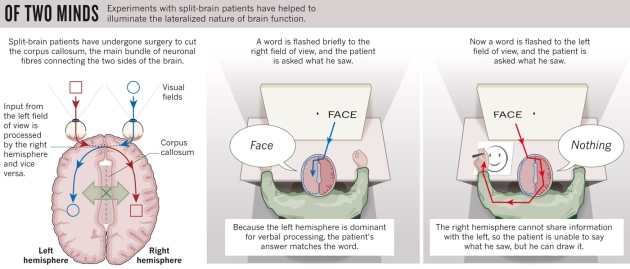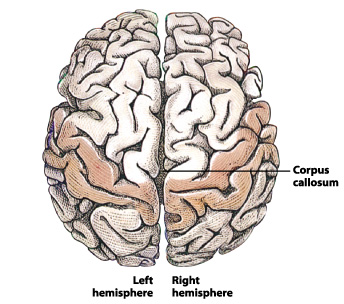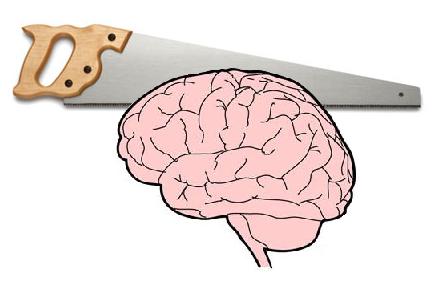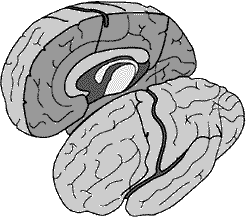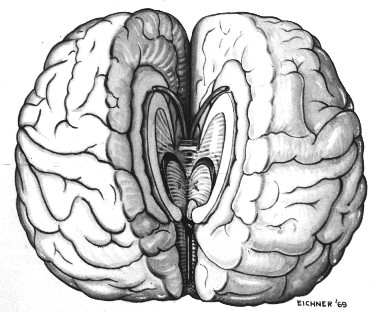Split Brain
Split Brain (English: split brain) called in medicine the state after neurosurgical transection of the corpus callosum, which connects the two cerebral hemispheres together.
The procedure itself is called a callosotomy. It is now used only rarely as a last resort for the treatment of epilepsy. By transection of the corpus callosum should be prevented from seizures from a brain spread to the other. As a result, the risk of falls and resulting injuries is reduced. In particular, the frequency of tonic, atonic and generalized tonic-clonic seizures secondary can be significantly reduced by this operation.
The patients show no abnormalities in the natural environment. The missing link from left and right hemisphere can nevertheless prove experimentally: Displays one split-brain patients in the left visual field (more precisely, on the right retina halves of both eyes ) an object, they can not call it. This is because that the speech center is in most people in the left hemisphere. The information from the left visual field, however, pass only to the right hemisphere. Because of the severed bar both hemispheres can not communicate with each other in split-brain patients. This is the information that is processed in the right hemisphere, not available for the language center. However, the persons concerned are in a position to engage with the controlled by the right hemisphere left hand a similar object.
This symptom does not occur if the line is missing due to a congenital malformation of the brain. In this case one speaks of a corpus callosum agenesis.
Significant research in the area of Split Brains were Joseph Arch, Roger Sperry and Michael Gazzaniga.



